There’s no mistaking which tanks are the lionesses this turn and which the worried/weary/wounded wildebeest. While the two Soviet AFVs retreat eastward before pivoting to confront their foes, the three German felines purposefully close distance and look for opportunities to use claws and maws.
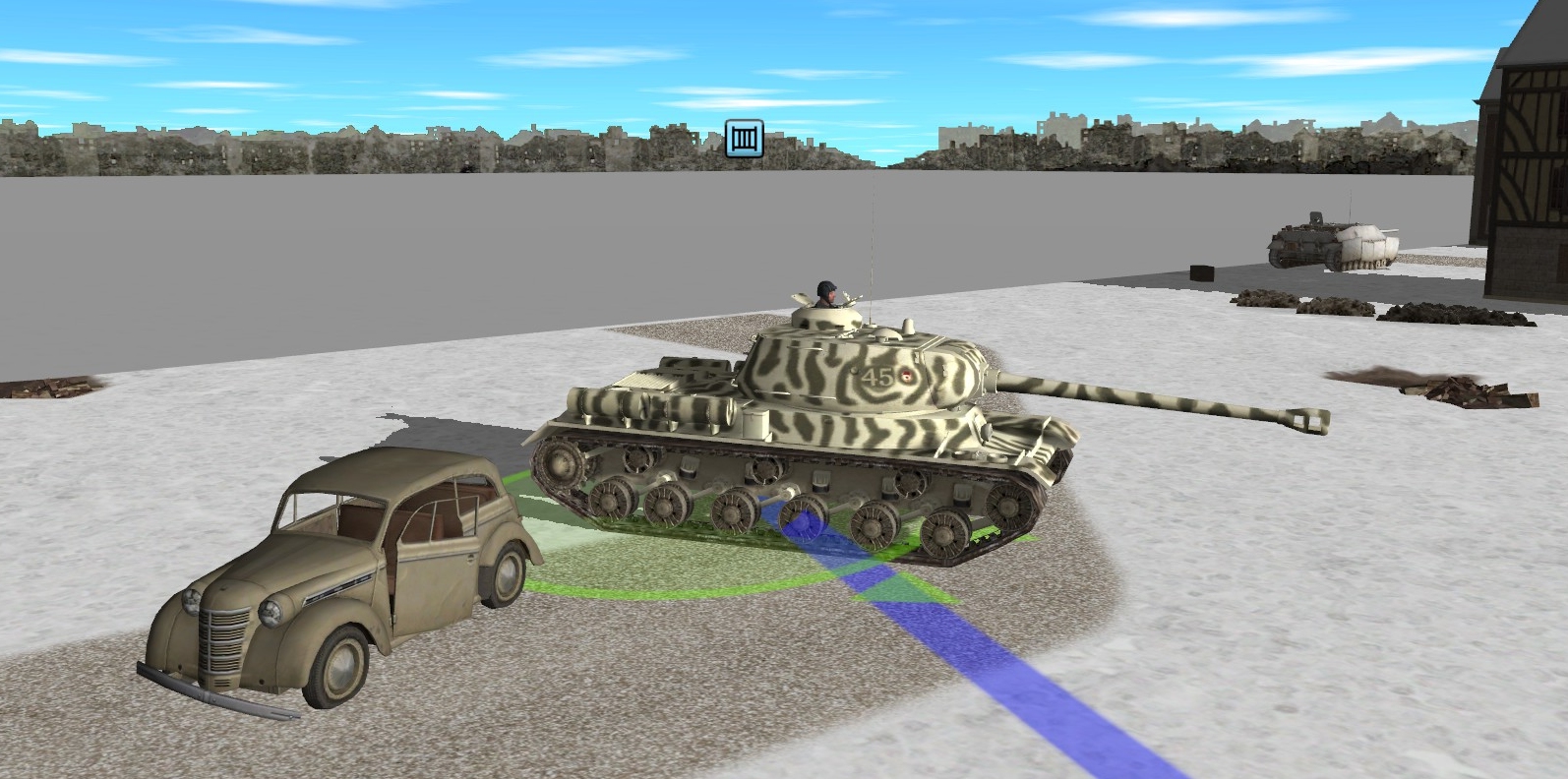
Considering the IS-2’s painfully ponderous rotation on reaching its final waypoint (e1SW), it’s probably a good thing that waypoint isn’t visible to any German unit. If the Panther had chosen to mount a northern probe this sixty rather than stay within the confines of the university, it’s just possible it might have added another kill ring to its barrel.
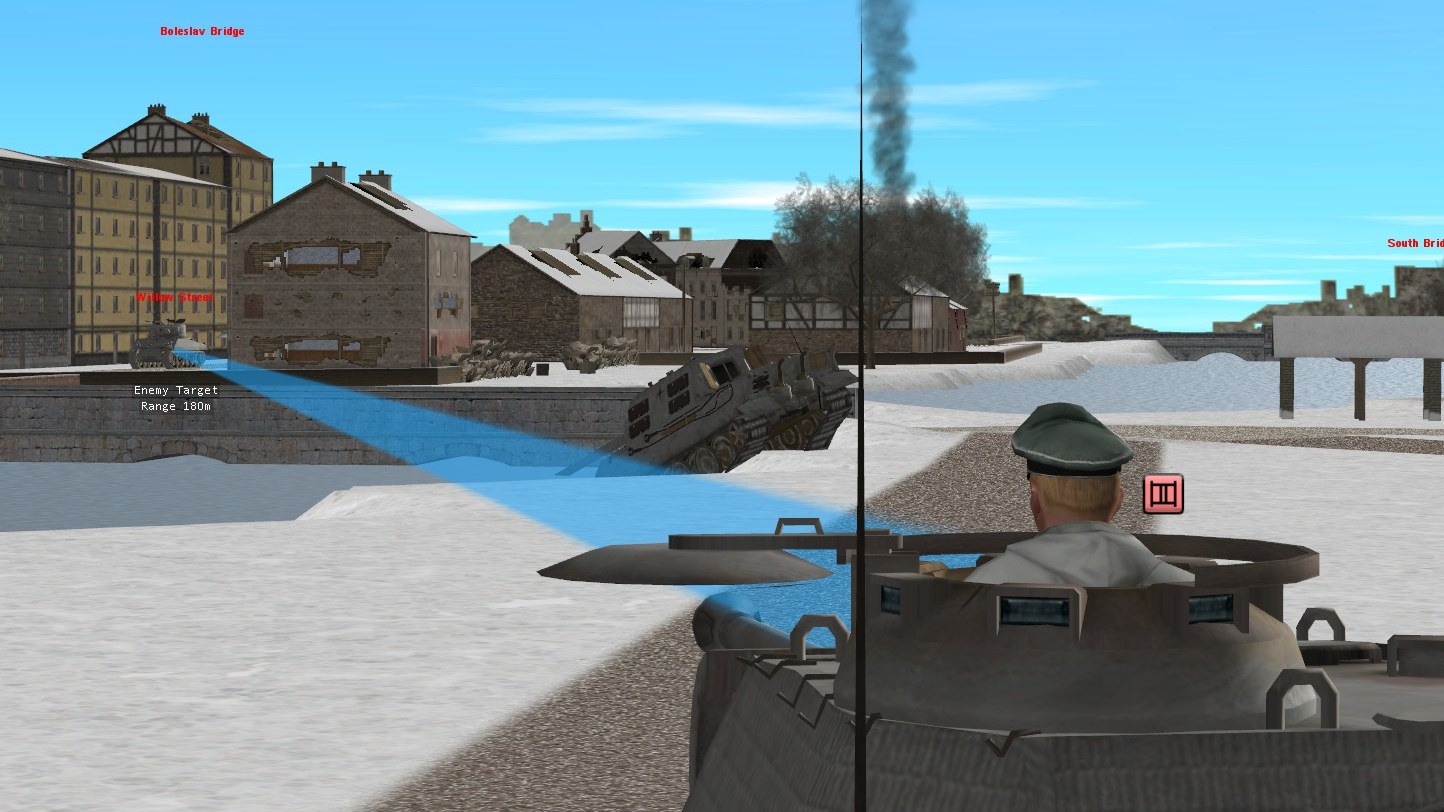
Instead, anticipating, perhaps, a second scalp in the vicinity of i9 (the square in which the Sherman perished), the PzKpfw V heads eastward, its gunner and commander scanning Willow Street for a squat tank destroyer that fails to appear.
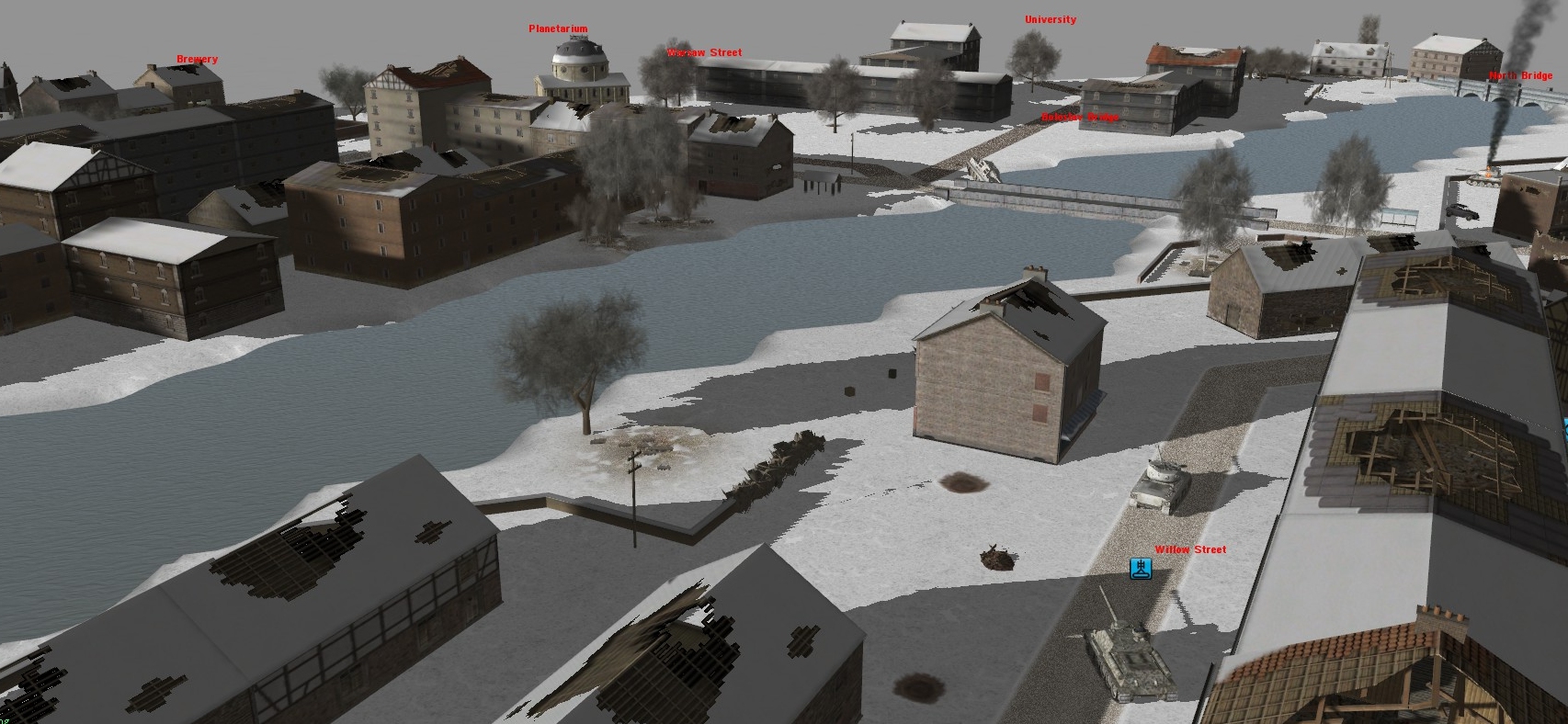
Hidden from the Panther by the house that straddles the border between i9 and i10, the SU-100 spends its turn preparing for a cross-river shooting match that seems on the cards until the Tiger’s lutrine impulses vanish circa e10.
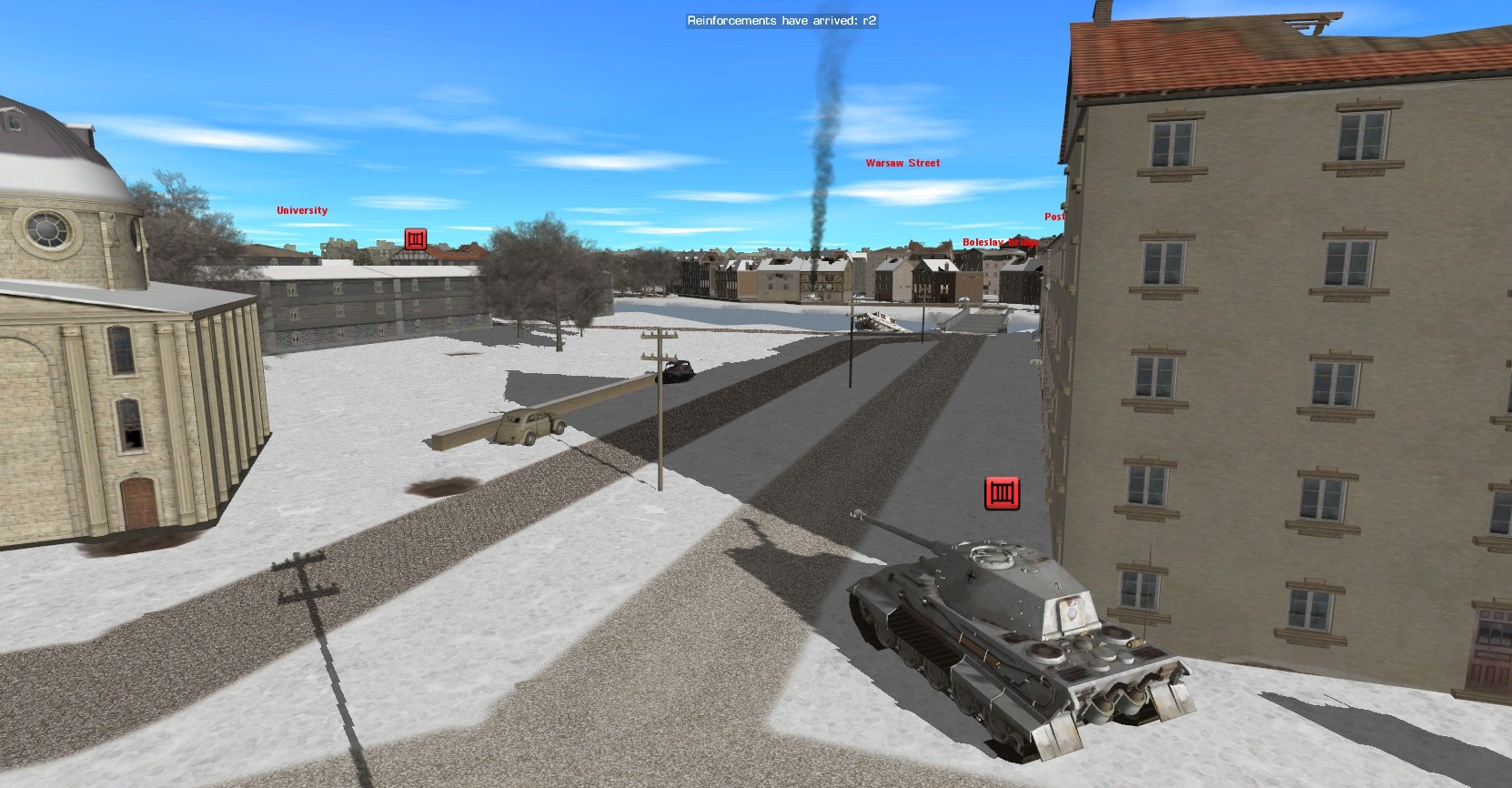
The King Tiger ends the seventh turn loitering at the junction of Warsaw Street and Fish Street (c11). From this commanding position it can boss Boleslav Bridge, deter occupation of the e2/e3 tree clump, and discourage enemy transits through e1. How, I wonder, will the seriously hampered IS-2 react to this development?
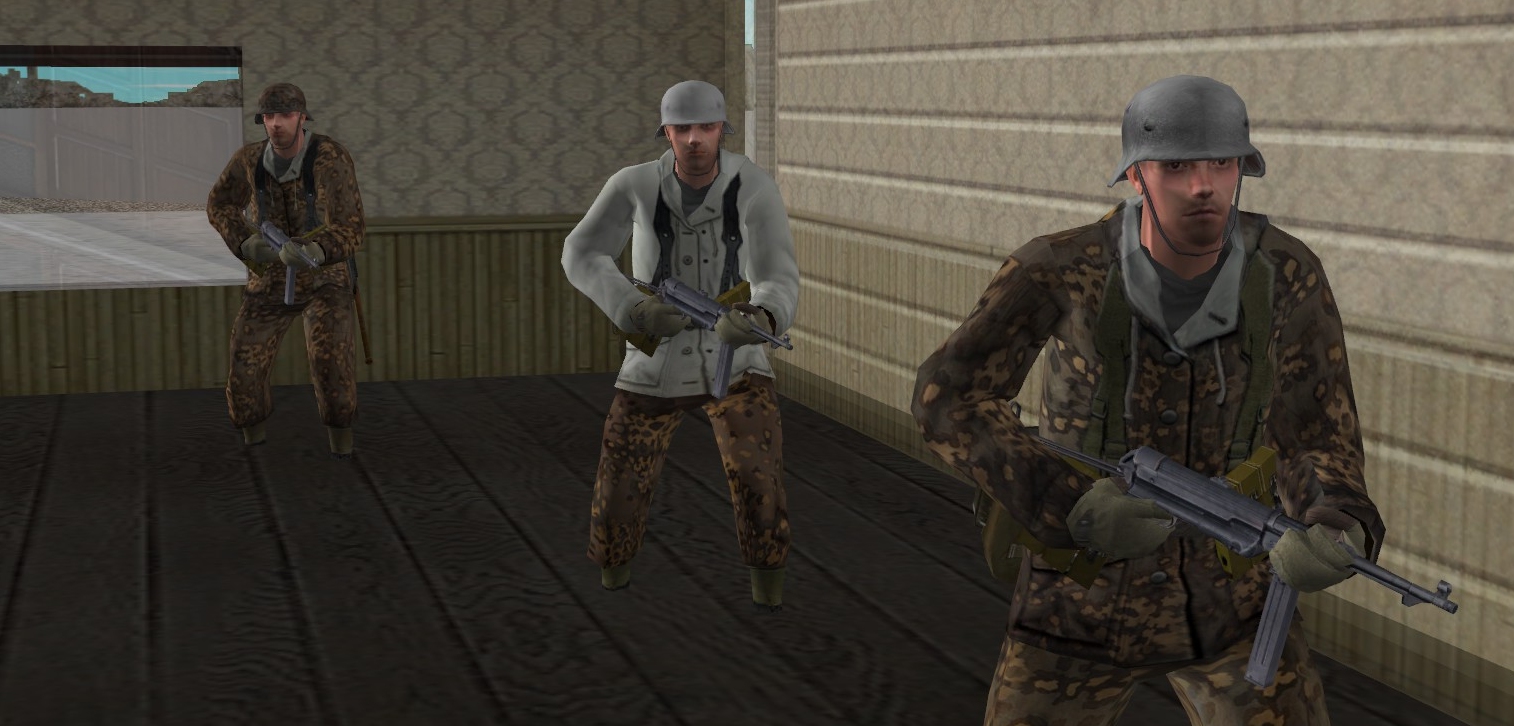
I wonder too how VFRHawk, the unlucky Comment Commander unhorsed in turn #1, will choose to employ the German scout team pictured above. The first infantry unit to arrive on the battlefield, if you ignore six stick grenades, this newcomer has no AT capability whatsoever.
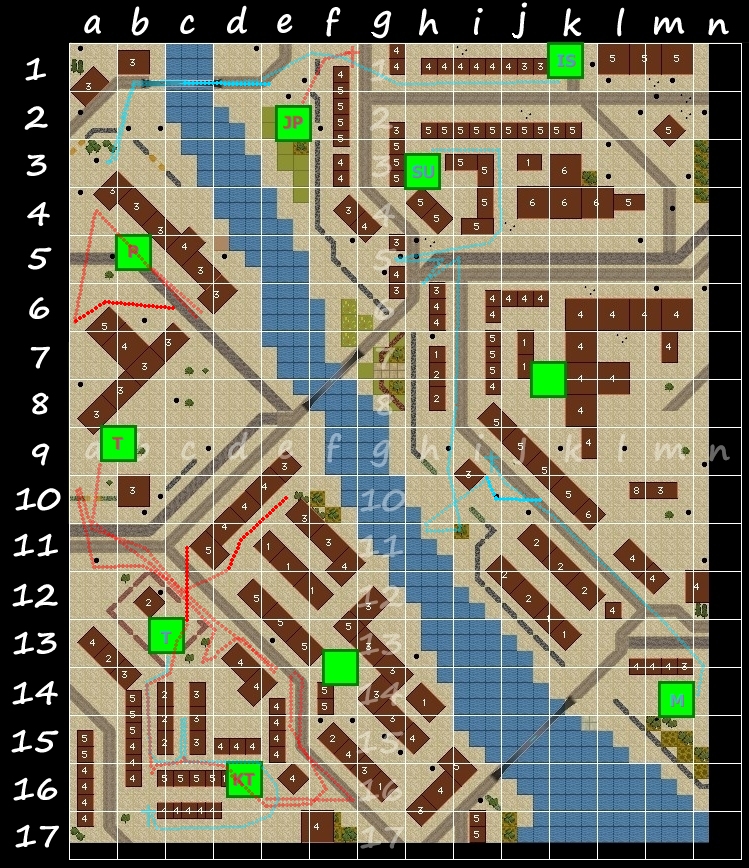
^ Rough guide to AFV movement
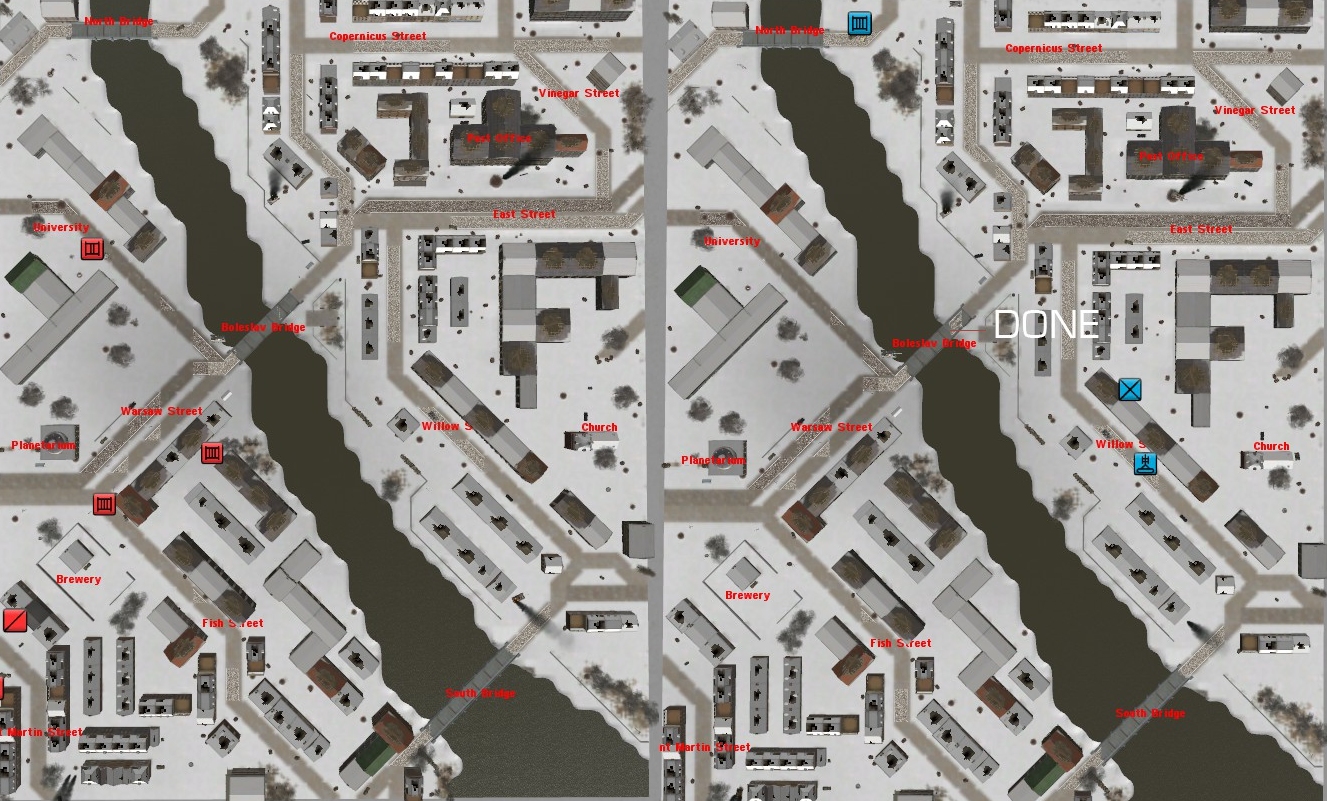
(Next order deadline: midday Wednesday, GMT)

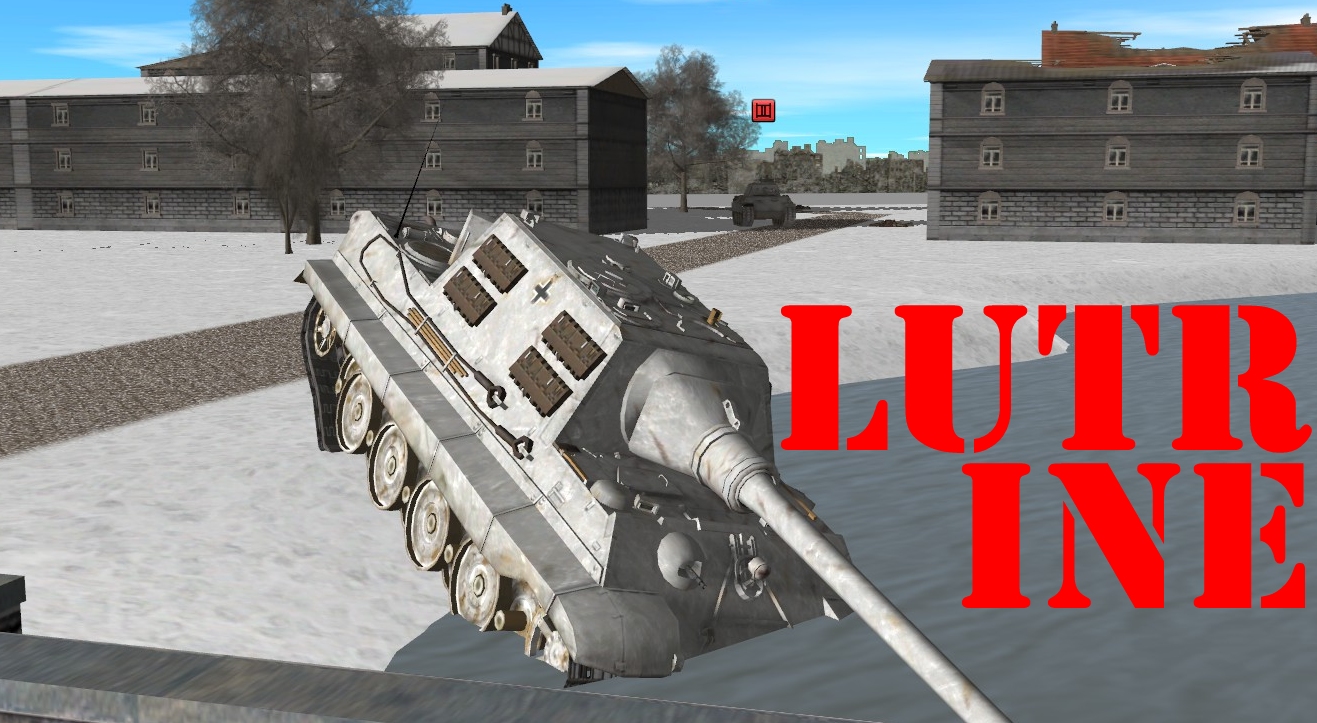
In the spirit of World Cup ’86, Colonel K stands up and raises his arms above his head, before sitting down again.